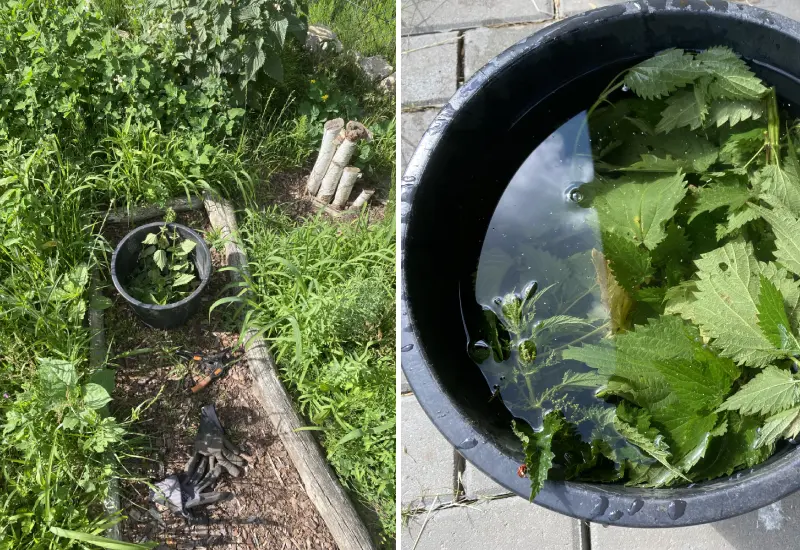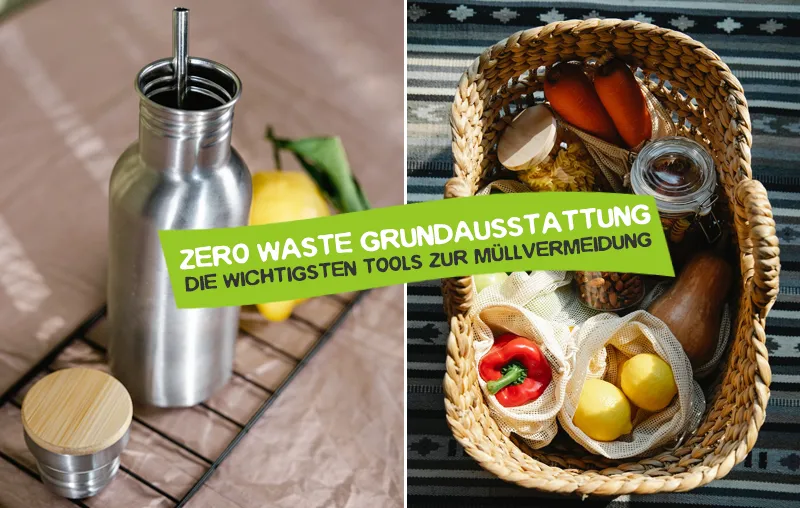Do you want to make a nettle slurry? Then you've come to the right place! The stinging nettle is often labeled as an annoying weed - but it's real garden gold! It is an ecologically valuable wild plant that is not only important for butterfly caterpillars and bees, but can also be used wonderfully in the garden.
It is particularly well known for its effect as a natural organic fertilizer. As a decoction, nettle is also effective against aphids and other so-called pests. Making your own nettle slurry is surprisingly easy - and not only saves money in the long termbut also chemicals in the garden.
In this article, I'll show you how to easily make your own slurry, what you need for it and the best way to use it. Let's get going! 🌱
Here is a brief overview in advance:
What You Need to Make Nettle Fertilizer

Before you get started, you should Locate places with lots of nettles in your area - and then get everything you need ready for your little DIY project.
You need to make nettle liquid manure:
- 1 plastic bucket (alternatively: mortar bucket or clay planter)
- 1 kg fresh nettles - Ideally harvest before flowering and without seeds
- 10 liters of water - rainwater is best collected
- 1 pair of gardening gloves - because nettles are known to burn
- 1 pair of secateurs for crushing the nettles
- A little patience... 😉
Additional Tip: If you want to inhibit the strong odors and speed up the fermentation process, you can also add a handful of stone meal (is available here*) to the mixture.
Step-by-Step: How to Make Your Own Nettle Fertilizer
Have you got all the utensils together? Then you're ready to go! How to make the slurry Step by step:
1. 1. Prepare the Nettles
Shake out the plants and try to remove all Small animals (e.g. ladybugs) that may still be on them. Crush then roughly cut the fresh nettles with secateurs - this speeds up the fermentation process.
2. Add Nettles to the Container
Place the plant material in your container and water it with about 10 liters of rainwater or stagnant tap water.
Check whether Beetles on the surface swim. If so, place them carefully in the greenery.
If you like, you can now also use the Add stone meal. But this is optional.
3. Let It Ferment – Stir Daily
Place the container in a sunny, sheltered place in the garden. The mixture starts to ferment quickly. You can recognize this by the foam and smelly odour on the surface.
Stir the slurry once a dayso that oxygen is added and the plant substances decompose better.
4. Ready After 10 to 14 Days
As soon as the Foam disappeared is, No more bubbles ascend and the Slurry evenly dark it is finished.
This usually takes about 10 to 14 days - depending on temperature and sun exposure. However, if you only need a decoction to fight aphids, you can use the liquid after 12-24 hours.
Now you have to Just sieve out plant parts. For example, simply put a cloth over another bucket and pour the entire mixture over it so that only the ready-to-use slurry remains.
How to Use Homemade Nettle Fertilizer in Your Garden
The slurry is ready for use! The emaciated You can either put plant parts in the compost or directly Spread as mulch in the vegetable or flower bed - nothing has to be thrown away! 🙂
But how do you use nettle slurry in the garden now? I have briefly explained two popular examples below.
Use as a Natural Boost for Heavy Feeders
Nettle slurry is an excellent, natural nitrogen fertilizer - particularly suitable for so-called heavy eaters such as Tomatoes, zucchinis, pumpkin, cabbage or Leek. These plants particularly benefit from the nutrient-rich mixture.
Important: You should Always dilute slurrybefore you apply them!
- For the normal application in the root area: 1 part liquid manure to 10 parts water
- For Sensitive plants or seedlings: In the Dilute in a ratio of 1:20
It is best to water once a week - always directly at the rootnot on the leaves.
Nettle Spray Against Aphids & Garden Pests insert
For example, you can use the nettle liquid manure wonderfully in the Fight against aphids on your garden plants if natural predators (such as ladybugs) are not present in time.
Go to Sustainable pest control but theoretically even a Nettle broth respectively Nettle broth. The preparation is similar:
- Simply mix nettles with water as you would with liquid manure
- But only 12-24 hours let go
- Then spray on directly undiluted and use within three days if possible
Tip: How you Lure ladybugs into your gardenyou can find out in the linked article!
DIY Nettle Fertilizer – Easy, Eco-Friendly, Effective
Nettle slurry is a real All-rounder in the gardeneasy to make, effective against pests and a natural fertilizer for your plants - without any chemicals. And the best thing? You are using a native wild plant that is far too often underestimated.
So: put on your gloves, get out your bucket - and off you go with your home-made manure! Your garden and the environment will thank you. And if you now really fancy a Natural garden I can recommend the book Wild & colorful: Designing natural gardens with native plants* to the heart.
"Nature does nothing in vain."
Aristotle (more under Nature Quotes)
I hope this article helps you to make your own nettle slurry. Do you have any questions, suggestions or further tips on making it? Then I look forward to your comment.
Stay conscious of nature,

PS: There are many more supposed weeds that are particularly valuable for insects. and which you can simply leave alone with a clear conscience. I present them all to you in the linked article.




